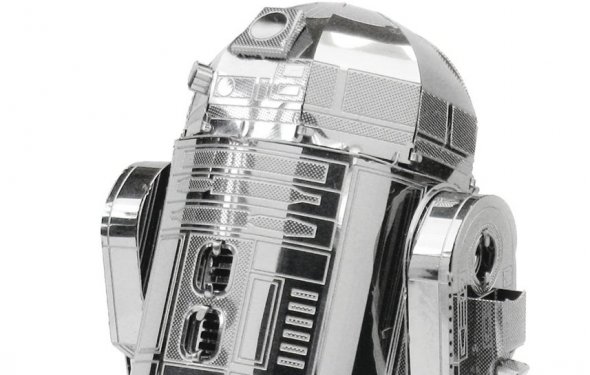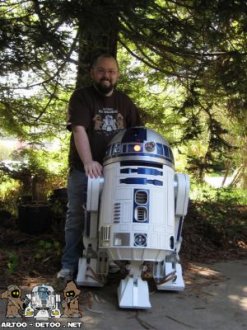build r2d2 kit

Star War's R2D2 has inspired a generation of engineers and engineers-to-be to poursue the field of Robotics. If you ever dreamed of having your own droid, this article will shows how you could.
By Chris James
This is an overview of how I integrated RoboteQ controllers into my replica R2-D2 project.
- Introduction and Overview
- Components
- Wiring
- Control System
- Photos and Videos

Overview of the Project
Kids of all ages know and love R2-D2. Since seeing Star Wars at an early age, I'd dreamed of having my very own droid. After almost two years of hard work I have a full-size replica that looks and sounds like the original R2-D2.
There's no kit for building an R2-D2. There are basic plans and components made by other fans and a community of builders from all over the world who are willing to help. It's up to each individual to decide how to build their R2-D2, and everyone makes different choices. My R2-D2 replica, is mostly made from aluminum, but I could have just as easily used wood or plastic.
People are sometimes surprised at how big he is. Standing almost 3 feet tall and weighing close to 200lb, he is definitely in the league of some of the larger battle bot type robots some of you may have seen. With that comes some challenges of getting him moving.
Building an R2 draws on knowledge from multiple disciplines, basic engineering to machining skills to electronics to painting.
The standing joke is that R2-D2 is a really badly designed robot - he's not very stable, can be top heavy, has all sorts of stress and structural problem from his leg/shoulder design. But our goal is to replicate the real R2 as closely as possible, flaws and all.
Some of the challenges with building such a heavy droid have been:
- Large powerful motors are needed to move him, but small enough to fit in a confined space.
- Speed controllers to drive those big motors.
- Large capacity batteries that will last at least a couple of hours.
Droid Components
In their simplest form, most mobile droids have the following basic components
- Drive system
- Dome rotation
- Lights and Sound
- Remote Control
- Batteries
In addition, a lot of builders strive to add as many gadgets as they can to mimic what the real R2-D2 had in the movies (and, yes, the jet propulsion was totally CGI).
Drive Motors: NPC Robotics - 2212 Drive Controller: RoboteQ FBL2360, Dome Rotation Motor: Pittman 9000 series Dome Controller: RoboteQ AX500 Batteries: 2 X 12V SLAs (18AH ea.)
I know that some people with lighter droids have successfully used the AX500 and AX1500 controller for the drive system.
Current run-time on the two 18AH SLA batteries is roughly 7 hours, but it can vary depending on terrain and distance traveled.
Wiring
The following schematic outlines the 3 main areas of my electronics setup:
- Red is the front charging port, flashing LEDs and the battery select/on/off switch.
- Yellow is the wiring harness/relays that does all the magic of switching batteries between charging mode or running the droid.
- Blue, shown on the right, is the rear electrical panel containing the speed controllers, fuse block, battery monitor, and power distribution board. It also contains an additional relay/power jack to run the drive from 120VAC/12VDC adapter.